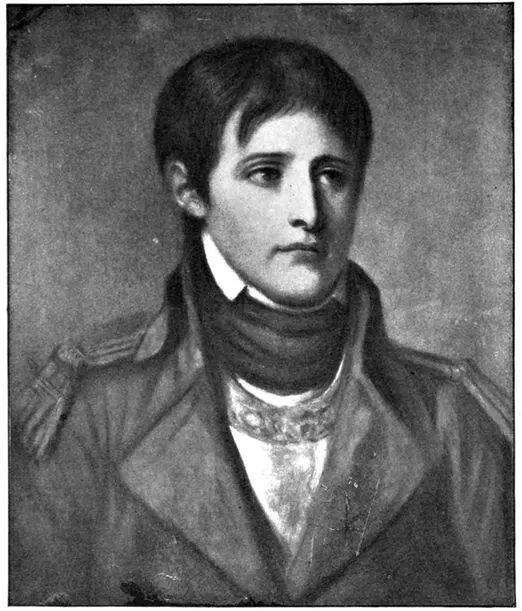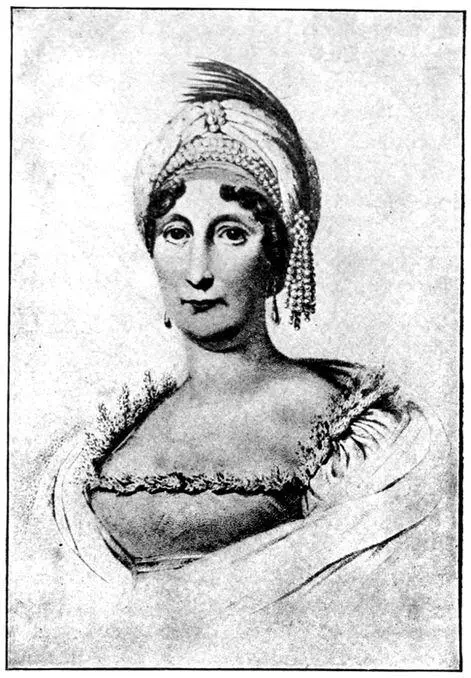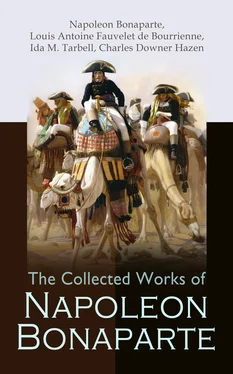The Biography of Napoleon Bonaparte
Table of Contents
The Life of Napoleon
Chapter I. Napoleon’s Youth and Early Surroundings—His School Days at Brienne
Chapter II. Napoleon in Paris—Lieutenant of Artillery—Literary Work—Napoleon and the Revolution
Chapter III. Napoleon and Robespierre—Out of Work—General-in-Chief of the Army of the Interior
Chapter IV. Napoleon’s Courtship and Marriage—His Devotion to Josephine
Chapter V. The First Italian Campaign—Napoleon’s Way of Making War
Chapter VI. Napoleon’s Return to Paris—The Egyptian Campaign—The 18th Brumaire
Chapter VII. Napoleon as Statesman and Lawgiver—The Finances—The Industries—The Public Works
Chapter VIII. Return of the Emigres—The Concordat—Legion of Honor—Code Napoleon
Chapter IX. Opposition to the Centralization of the Government—General Prosperity
Chapter X. Preparations for War with England—Flotilla at Boulogne—Sale of Louisiana
Chapter XI. Opposition to Napoleon—The Establishment of the Empire—King of Italy
Chapter XII. Campaign of 1805—Campaign of 1806–1807—Peace of Tilsit
Chapter XIII. Extension of Napoleon’s Empire—Family Affairs
Chapter XIV. The Berlin Decree—War in the Peninsula—The Bonapartes on the Spanish Throne
Chapter XV. Disaster in Spain—Alexander and Napoleon in Council—Napoleon at Madrid
Chapter XVI. Talleyrand’s Treachery—The Campaign of 1809—Wagram
Chapter XVII. The Divorce—A New Wife—An Heir to the Crown
Chapter XVIII. Trouble with the Pope—The Conscription—Evasions of the Blockade—The Tilsit Agreement Broken
Chapter XIX. The Russian Campaign—The Burning of Moscow—A New Army
Chapter XX. Campaign of 1813—Campaign of 1814—Abdication
Chapter XXI. Ruler of the Island of Elba—Return to Paris—The Hundred Days—The Second Abdication
Chapter XXII. Napoleon’s Surrender to England—Sent to St. Helena—Life in Exile—Death of Napoleon
Chapter XXIII. The Second Funeral of Napoleon—Removal of Napoleon’s Remains from St. Helena to the Banks of the Seine in 1840
Autographs of Napoleon from 1785–18163
Table of the Bonaparte Family
Chronology of the Life of Napoleon Bonaparte
Table of Contents

BONAPARTE AT TWENTY-TWO YEARS OF AGE
After a portrait by Greuze.
Chapter I
Napoleon’s Youth and Early Surroundings—His School Days at Brienne
Table of Contents
“If I were not convinced that his family is as old and as good as my own,” said the Emperor of Austria when he married Marie Louise to Napoleon Bonaparte, “I would not give him my daughter.” The remark is sufficient recognition of the nobility of the father of Napoleon, Charles Marie de Bonaparte, a gentleman of Ajaccio, Corsica, whose family, of Tuscan origin, had settled there in the sixteenth century, and who, in 1765, had married a young girl of the island, Lætitia Ramolino.
Monsieur Bonaparte gave his wife a noble name, but little else. He was an indolent, pleasure-loving, chimerical man, who had inherited a lawsuit, and whose time was absorbed in the hopeless task of recovering an estate of which the Church had taken possession. Madame Bonaparte brought her husband no great name, but she did bring him health, beauty, and remarkable qualities. Tall and imposing, Mademoiselle Lætitia Ramolino had a superb carriage, which she never lost, and a face which attracted attention particularly by the accentuation and perfection of its features. She was reserved, but of ceaseless energy and will, and though but fifteen when married, she conducted her family affairs with such good sense and firmness that she was able to bring up decently the eight children spared her from the thirteen she bore. The habits of order and economy formed in her years of struggle became so firmly rooted in her character that later, when she became mater regum , the “Madame Mère” of an imperial court, she could not put them aside, but saved from the generous income at her disposal, “for those of my children who are not yet settled,” she said. Throughout her life she showed the truth of her son’s characterization: “A man’s head on a woman’s body.”
The first years after their marriage were stormy ones for the Bonapartes. The Corsicans, led by the patriot Pascal Paoli, were in revolt against the French, at that time masters of the island. Among Paoli’s followers was Charles Bonaparte. He shared the fortunes of his chief to the end of the struggle of 1769, and when, finally, Paoli was hopelessly defeated, took to the mountains. In all the dangers and miseries of this war and flight, Charles Bonaparte was accompanied by his wife, who, vigorous of body and brave of heart, suffered privations, dangers, and fatigue without complaint. When the Corsicans submitted, the Bonapartes went back to Ajaccio. Six weeks later Madame Bonaparte gave birth to her fourth child, Napoleon.
“I was born,” said Napoleon, “when my country was perishing. Thirty thousand Frenchmen were vomited upon our soil. Cries of the wounded, sighs of the oppressed, and tears of despair surrounded my cradle at my birth.”
Young Bonaparte learned to hate with the fierceness peculiar to Corsican blood the idea of oppression, to revere Paoli, and, with a boy’s contempt of necessity, even to despise his father’s submission. It was not strange. His mother had little time for her children’s training. His father gave them no attention; and Napoleon, “obstinate and curious,” domineering over his brothers and companions, fearing no one, ran wild on the beach with the sailors or over the mountains with the herdsmen, listening to their tales of the Corsican rebellion and of fights, on sea and land, imbibing their contempt for submission, their love for liberty.
At nine years of age he was a shy, proud, wilful child, unkempt and untrained, little, pale, and nervous, almost without instruction, and yet already enamored of a soldier’s life and conscious of a certain superiority over his comrades. Then it was that he was suddenly transplanted from his free life to an environment foreign in its language, artificial in its etiquette, and severe in its regulations.
It was as a dependent, a species of charity pupil, that he went into this new atmosphere. Charles Bonaparte had become, in the nine years since he had abandoned the cause of Paoli, a thorough parasite. Like all the poor nobility of the country to which he had attached himself, and even like many of the rich in that day, he begged favors of every description from the government in return for his support. To aid in securing them, he humbled himself before the French Governor-General of Corsica, the Count de Marbœuf, and made frequent trips, which he could ill afford, back and forth to Versailles. The free education of his children, a good office with its salary and honors, the maintenance of his claims against the Jesuits, were among the favors which he sought.
By dint of solicitation he had secured a place among the free pupils of the college at Autun for his son Joseph, the oldest of the family, and one for Napoleon at the military school at Brienne.

LÆTITIA RAMOLINO, NAPOLEON’S MOTHER. BORN 1750, DIED 1836.
To enter the school at Brienne, it was necessary to be able to read and write French, and to pass a preliminary examination in that language. This young Napoleon could not do; indeed, he could scarcely have done as much in his native Italian. A preparatory school was necessary, then, for a time. The place settled on was Autun, where Joseph was to enter college, and there in January, 1779, Charles Bonaparte arrived with the two boys.
Читать дальше














